Update: A Renault Vanderbilt Racer was Sold Today at the Amelia Island Auction
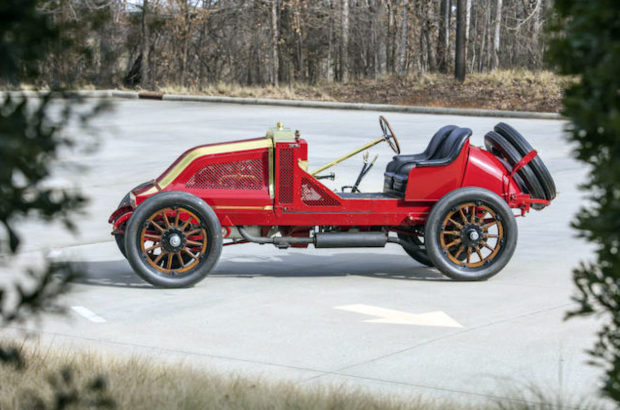
Bonham's sold one of the four U.S. surviving Renault Vanderbilt Racers for $3.333 million today at The Amelia Island Auction.
Details and images are below.
Any guestimates on how much this rare racer will sell for with commissions?
Enjoy,
Howard Kroplick
Lot 159
Ex James Melton, William Spear, Indianapolis Speedway Museum
1907 Renault Type AI 35/45HP Vanderbilt Racer
Coachwork by Renault Frères
Chassis no. 8938
Engine no. 225
7.5 Liter, L Head 4-Cylinder Inline Engine
Approx. 65 bhp
4-Speed Progressive Transmission
Semi-Elliptic Leaf Springs Front and Rear
Mechanical Hub and Service Brakes
*One of the greatest motorcars of its era
*Commissioned by Willie K Vanderbilt for American racing
*One of 4 survivors in the US
*Impeccable originality and provenance
RENAULT
Louis Renault was a pioneer in automobile design in the infant French motor industry, building his first car as early as 1898, mounting a De Dion Bouton engine on the front of a primitive tubular chassis frame. Ever the innovator, he broke from traditional design by featuring a sprung live rear axle, a feature soon to be copied by his contemporaries. Benefiting from substantial financial backing, production began at Billancourt of 1¾hp and 3hp cars, with the hugely successful Type C 3½hp cars of 1900 followed by the 4½hp models which appeared soon after. From the outset Renault saw the benefits to be gained from involvement in motor sport and, along with his brother Marcel, he took an active part in this new sporting activity. Although the headlines were stolen by larger cars, Renault, with their voiturettes, were highly regarded, achieving class successes in continental events and in the great French City-to-City races.
In the 1901 Paris-Bordeaux Race, Louis Renault led a victorious team of four Renaults, taking first place himself in the voiturette class and completing the epic journey in just 9 hours and 31 minutes, with brother Marcel in second place just eight minutes behind, with Oury and Grus on similar Type E cars following in third and fourth places. In 1902 Renault were to achieve their ultimate success, Marcel Renault stealing outright victory in the Paris-Vienna Race at the wheel of a 16hp model, covering the distance at an average speed of 39.2mph. These racing victories kept Renault at the forefront of the public mind and resulted in sales orders and production figures which were the envy of their competitors.
The following years would see dramatic advances in motoring technology and Renault staying on the leading edge of it all. Renault lead the way with advanced technology like hydraulic shock absorbers in 1906 – years ahead of their time, the brilliantly engineered tumbler box transmission allowed for precise and fast shifting that a racing car demanded. Renault's racing chassis were groundbreaking in their near mid-engine layout. The engine and transmission were moved back significantly, and Renaults signature radiator was placed at the firewall creating near perfect weight distribution. The majority of manufacturers were trying to win races on brute power and gave little thought to handling. Other features like quick detachable rims made the all-too necessary tire changes far more rapid. By 1906 Renault's racing cars represented the ultimate in a fully designed and thoroughly developed racing machines and they had the results to back it up.
THE VANDERBILT RENAULTS
No name is more associated with the rise of early American motor racing than Willie K Vanderbilt. Vanderbilt got the bug for high performance machinery in the latter 1800s. By 1900 he as organizing his own races in Newport, Rhode Island and dabbling in Grand Prix racing in Europe. His Newport races would move to Long Island and become the Vanderbilt cup - the most important of all motor races in America in this period. Vanderbilt himself would hold a world speed record and achieve numerous victories. In 1906 Willie K Vanderbilt recognized the small but viable market for a cutting-edge racing car. High level racing cars in this period were purpose built, huge displacement, highly temperamental machines raced and supported by the factories, lower level racing was done in fairly unsophisticated races often based on modified passenger cars. Vanderbilt went to Renault to see if they would produce batch of their state of the art 35/45hp racing car for his American friends. This potent and highly developed machine was a smaller version of Renaults delicate GP car and much more suited for private ownership. Vanderbilt secured approximately 10 orders and payed Renault $150,000 for the batch of racing cars. Each of the racers were identical mechanically but would vary slightly in coachwork details, likely adaptations to better fit the physical proportions of its owner. Some were outfitted with road equipment and others kept lean for race use.
The 35/45 proved the perfect racer for customers, extremely refined and sophisticated but durable and not overly brutish. It was super car the owner could still crank himself. Based around the potent Type AI engine but with a dramatically different chassis layout. The engine and transmission were placed nearly two feet farther back in the frame – as far back as one could place it and still have some semblance of a drive shaft. The Type AI engine is mated to a four-speed alloy gearbox – with an ingenious scroll wheel that translates the H pattern fork selection into a progressive all in a row shift pattern. A miniature drive shaft connects the transmission to the Renault trademark drive axle. A final drive ratio of 2:1 allows for its monumental top end speed. The iconic Renault radiator is fed by thermosyphon and mounted nearly on center were its significant heft effects the handling the least. The long elegant hood and radiator combination have an amazing windshield like effect in diverting the air over the occupant's heads while driving at speed.
The Renault's presence on the American race scene was known right away when Louis Raffolovitch won the 24hour race at Morris Park in Brighton Beach, in what may be this very car. Another Renault 35/45 Vanderbilt would win the same race in 1909 as well. Many other victories were massed by the Renaults often in the hands of amateurs while at the same time proving their merit as a superb high-performance road car. Willie K Vanderbilt toured his personal Renault 35/45 around Europe as documented in his motoring memoir of the period.
THE MOTORCAR OFFERED
This particular Vanderbilt has survived in staggeringly complete and fine condition. It was first discovered by James Melton in Ridgefield, Connecticut in 1946. Melton, a famous radio opera singer was the most prominent celebrity collector of his day and would assemble a superb collection of early motorcars and help ignite the passion for this young growing hobby. The Renault was lightly restored and equipped with road going equipment like headlamps and fenders. Melton adorned it with one his signature Connecticut vanity license plates – FROG!
The Renault would pass into the hands of William Spear Jr. Spear is best known as Briggs Cunningham's top racing driver and his multiple assaults on the 24 Hours of Le Mans. It's no surprise this pedigree racing Renault appealed to such a sportsman. During Spear's ownership the car was often displayed at Briggs Cunningham's collection.
In 1957 Indianapolis Speedway owner Tony Hulman was searching the country in search of the most significant racing machines for the Indianapolis Speedway Hall of Fame Museum. Hulman learned of Spears Renault and paid him the eye watering price of $7500 for the machine. The machine would reside in the care of the Speedway Museum for more than 60 years until acquisition by the current owner.
Its history prior to Melton's ownership is still being researched along with those of the other four cars. As the cars are so similar differentiating them is a bit of a science. After examining countless period photos there is strong evidence of this being the car driven to victory by Louis Raffolovitch in the Brighton 24hrs of 1907. It is the only car with an original large fuel tank with oversized filler neck that is clearly seen on the winning car. During the race the car was run without its aluminum tail – leaving the tank fully visible. The tank and filler caps are original and have the factory stampings.
In its current ownership it has been driven regularly, raced and undergone work to bring it back to its proper original appearance. It has romped through several Paso Robles tours, the Pebble Beach Tour D'Elegance, and competed in the Wilbraham Hill Climb – scoring the fastest time for a pre-WWI racer.
In 2016 the Renault had its gearbox rebuilt and received paint and interior work in preparation for the Pebble Beach Concours D'Elegance. While renewing the interior the original upholstery was discovered under the old 1950s trim. This was carefully removed and documented – new leather carefully duplicating the original was fitted and the original is kept with the car. It joined the reunion of the four surviving US based Vanderbilt Renaults held at Pebble Beach, winning the Pre-War Racing class, The Phil Hill Trophy and the Revs institute award – a 'triple crown'!
The road performance of this machine has to be experienced to be truly appreciated. The light car with this big potent four scurries away effortlessly as the leaf springs bend under the engines immense torque. The brilliant "tumbler" gear box is un-rivalled for its smooth, fast and silent shifts that allow the driver to get the most out of this flexible powerplant. Because the engine and radiator weight is moved to the middle of the chassis the car is extremely balanced and can be run down a twisty road with immense confidence and precision. Once in top gear the Renault will propel you as fast as you dare with no complaints. Comfortable cruising at 65 is just the beginning – mash the throttle and you are well above the legal limit and feeling like you never travelled so fast in automobile before.
The state of completeness and originality of this Renault is staggering. The impeccable Renault aluminum castings are in superb condition and show no signs of repair or abuse. All components are extensively numbered and practically everything save, the Renault carburetor is as delivered from Billancourt.
Few people will ever experience what it is like to drive a motorcar like this. This experience is so pure and exciting its why many people say it's the greatest in all of motoring. After this early period there were no more racing cars with four-cylinder engines in excess of 7 liters. This era of racing car embodies a romance and mystique apart from the later periods. Never was the machinery so raw and brutish and driving them so different from anything that came later. Authentic factory produced racers of this period are the rarest type of car in the whole collector hobby with just a handful of proper cars in private hands. Few are as easy to live with and as much fun as this superb Renault Vanderbilt. Of the five authenticated Renault Vanderbilt racers half are in major Museum collections, the next opportunity to acquire one might be a very long time from now.
Bonham's Renault Vanderbilt Racer
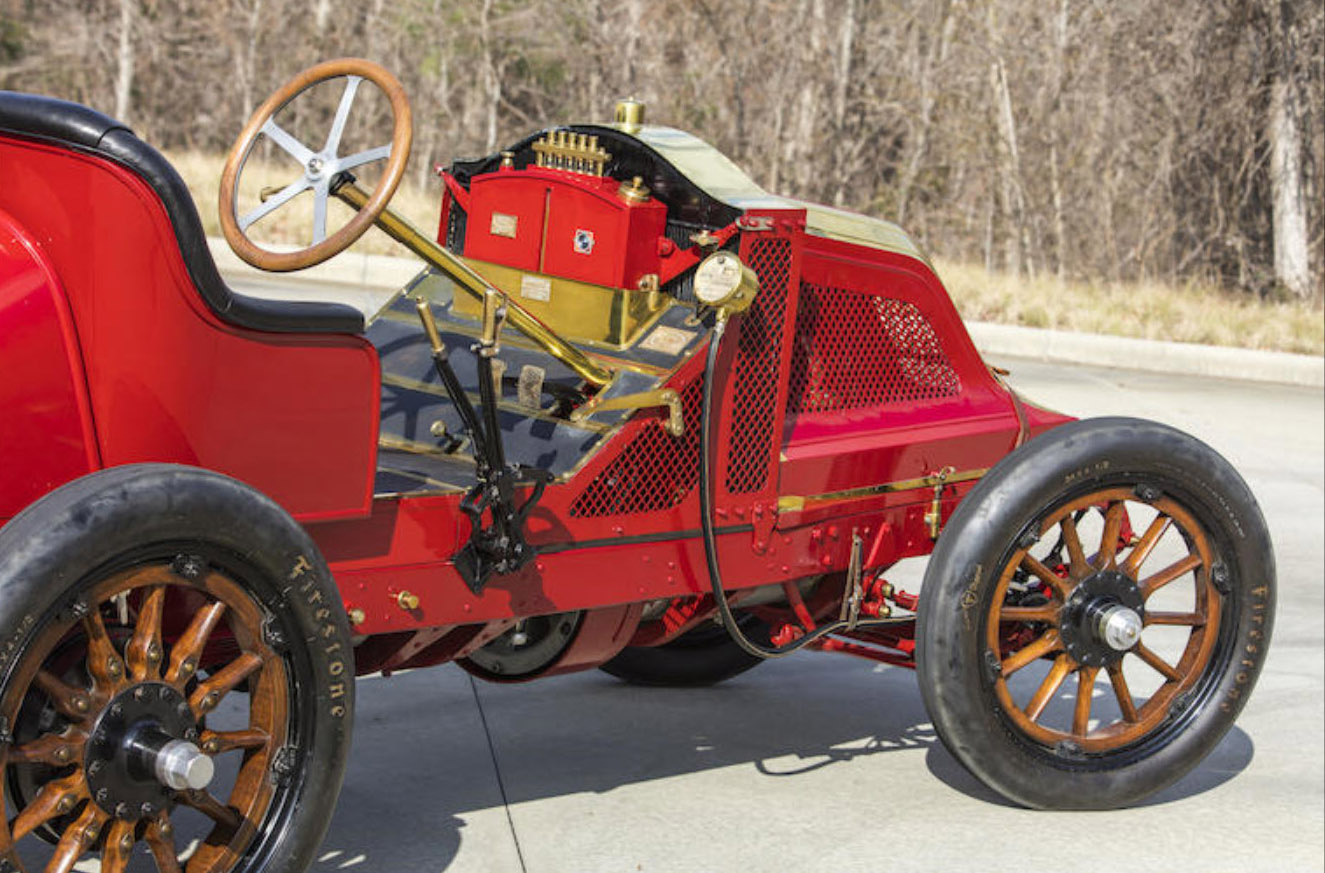
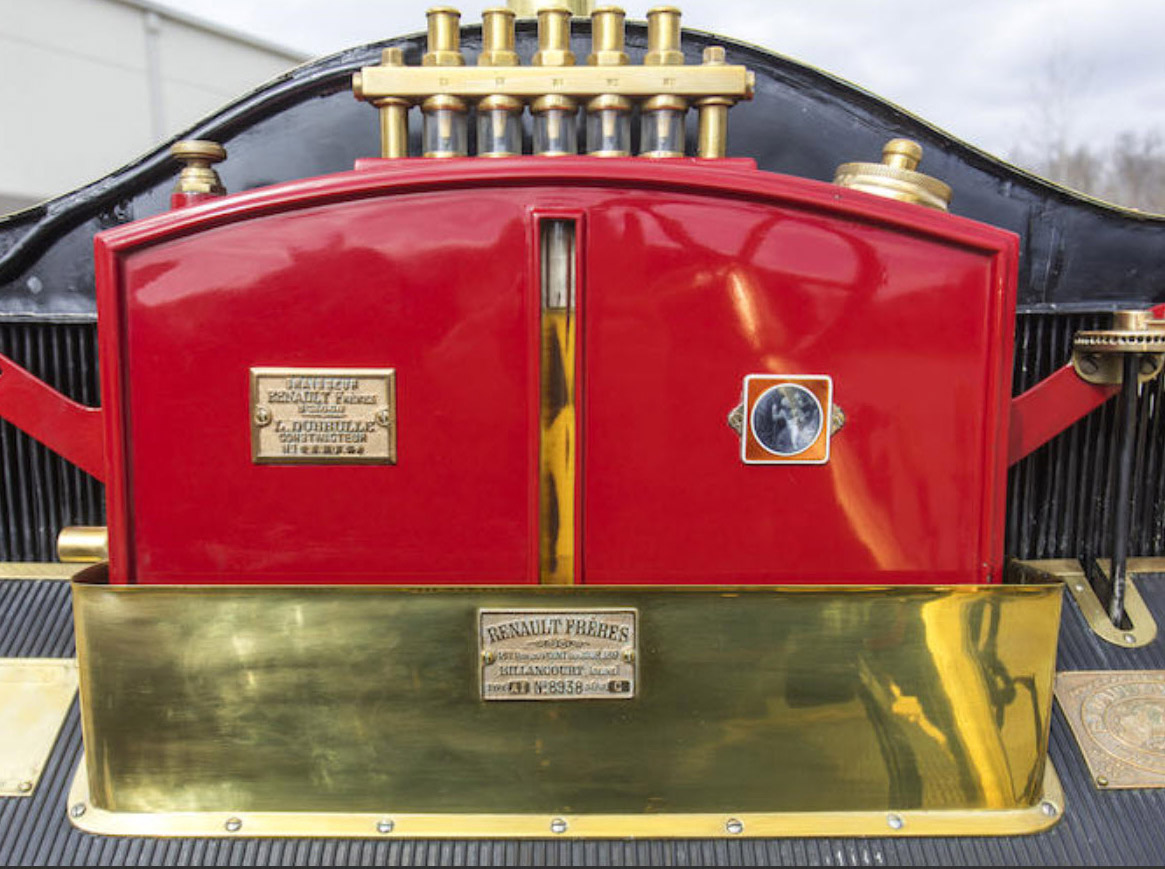
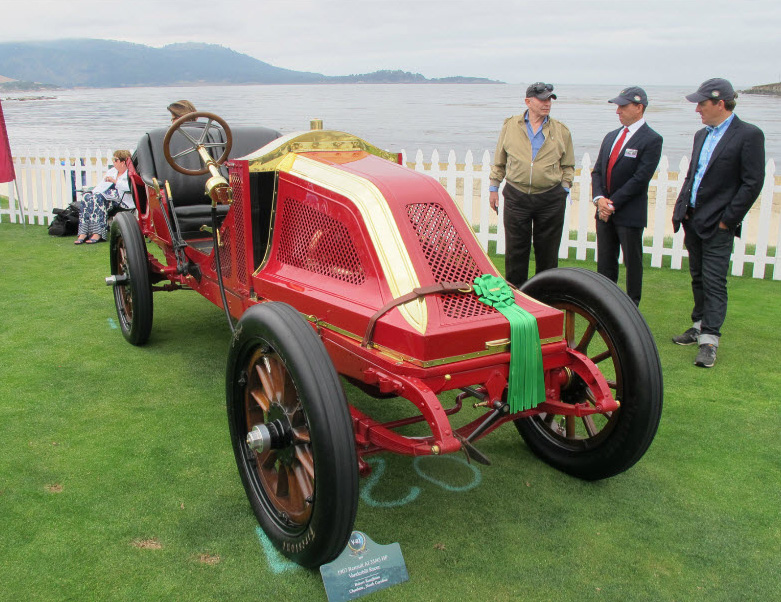
On display at the 2017 Pebble Beach Concours d'Elegance
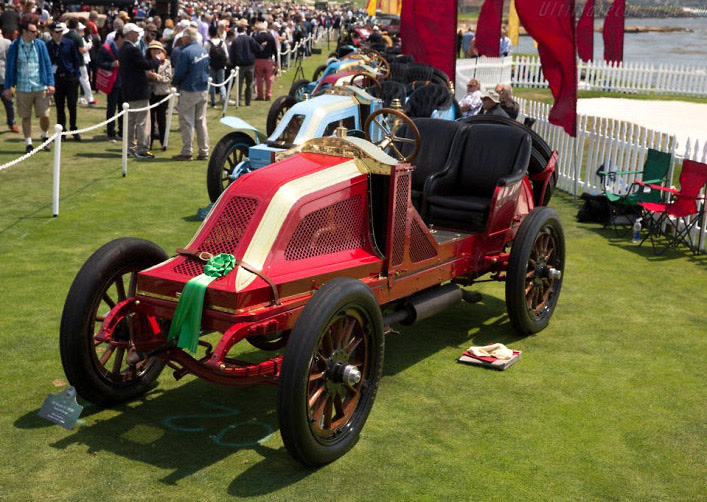
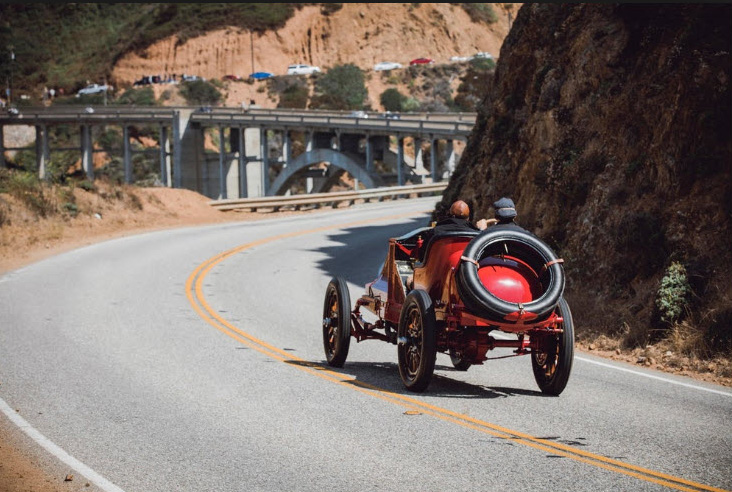
On the 2017 Pebble Beach Tour d'Elegance
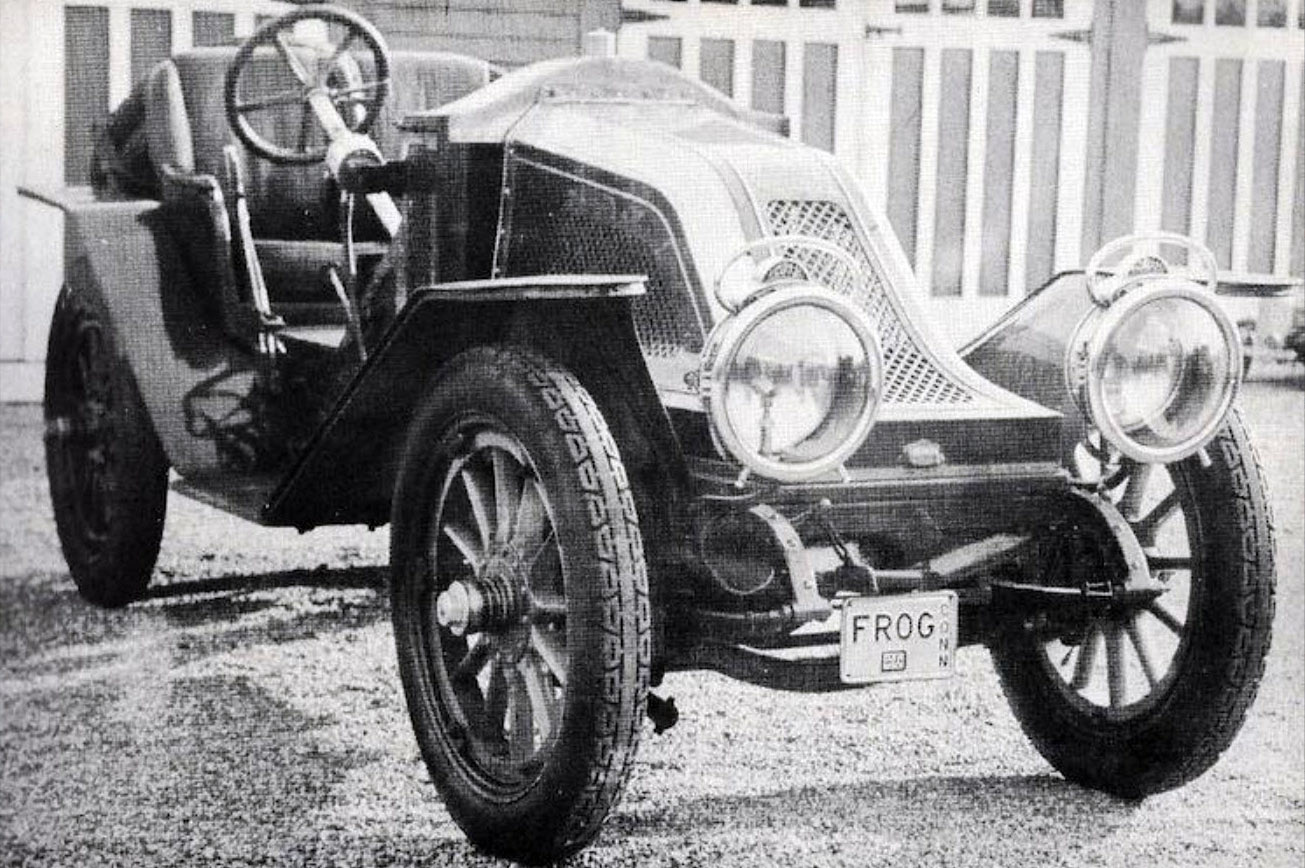
Bonham's Renault Vanderbilt Racer named "Frog" when owned by James Melton.

William K. Vanderbilt, Jr's 35/45 HP Racer
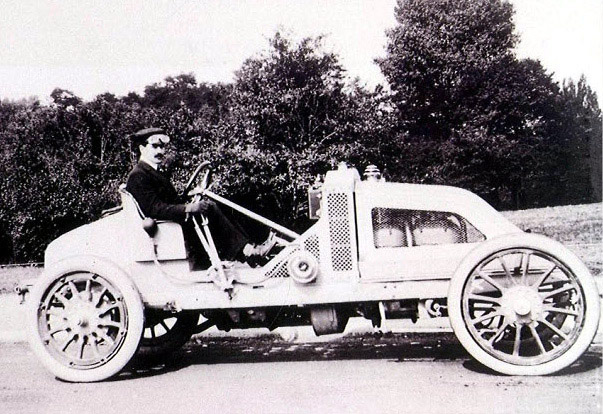
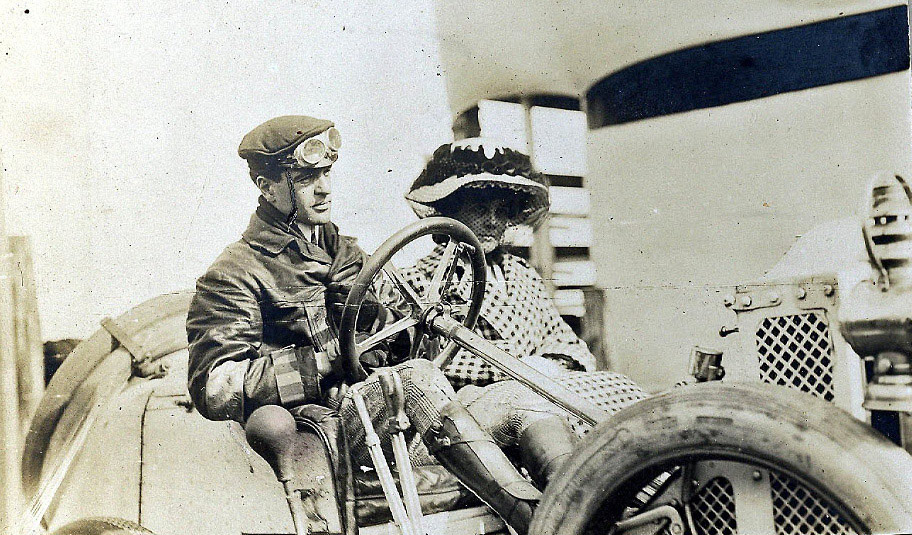
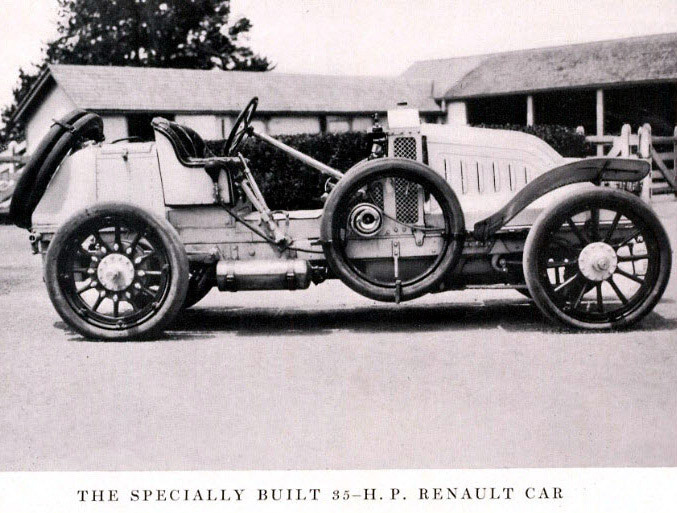
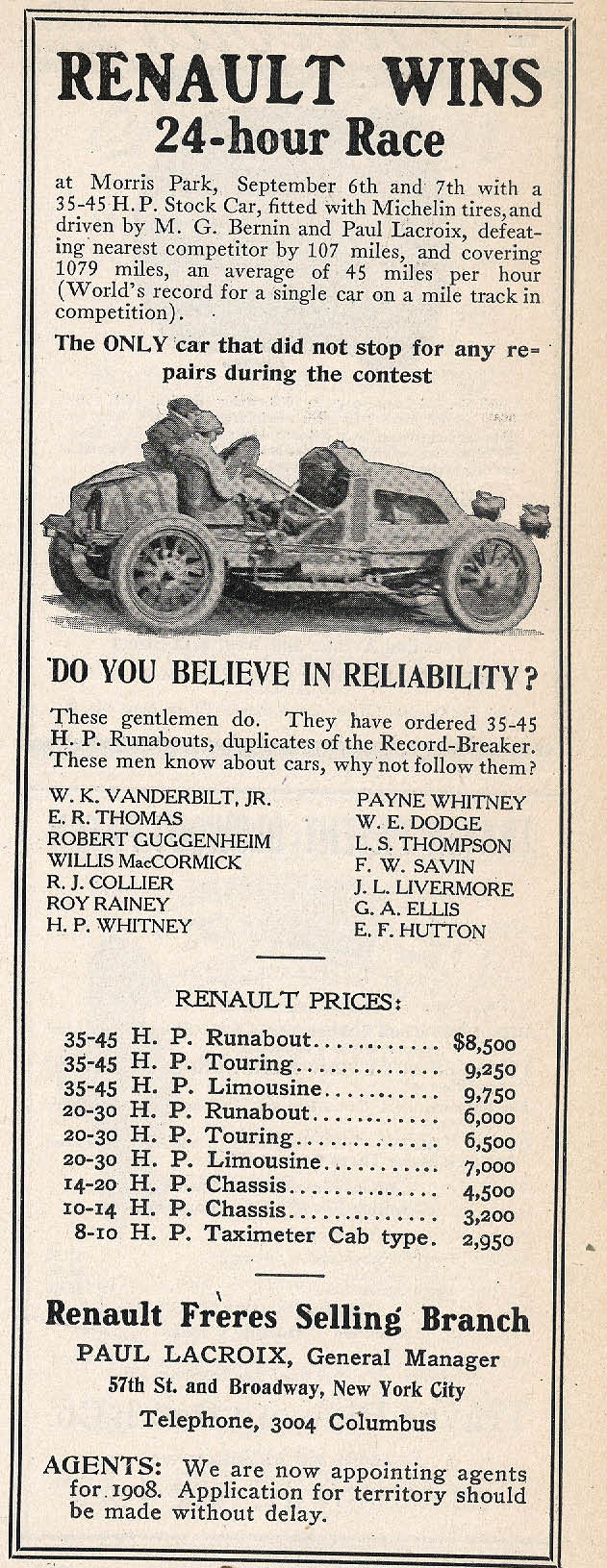
A list of the original owners of the "35-45 H.P. Runabouts" including E.R. Thomas, Robert Guggenheim, H.P. Whitney, Payne Whitney and E.F. Hutton.

Comments
With commission I estimate 2 1/4 million. Good Luck!
I’m covering sale of this Renault at Bonhams for Sports Car Market magazine. I don’t want to guess at sale price, but if anyone has additional information about this car please comment, or write me at .(JavaScript must be enabled to view this email address).
So Howard, when will the Renault make it’s debut on Long Island roads again? It would look great in your collection! You can only have a race when ole Number 8 has a mate!
Best Regards,
Scott & Vicki
I agree that it will fetch a high dollar. Amazing rig.
Will be there to watch it cross the block.
Quite a car , I had to go back to the Feb 2018 SCM they covered the Bothwell collection auction , The star car was the 1914 Peugeot L45 GP/ Indy car with the innovative and much copied DOHC engine ( Miller, Bugatti,Offenhouser, Meyer-Drake). It went for $7M a real world icon. SCM also covered a London to Brighton sale,non race cars from the 1890’s to 1904 most were in the $40,000 to $100,000 range a few topping $200,000 the top car a 1903 Panhard at $ 428,000 . Will be interesting to see what the Renault brings with the Vanderbilt connection. As Thor Thorenson wrote about the Peugeot “Only the person who chose to buy this amazing car at auction could set its value, thus I will say it was fairly bought”
I see similar car sn 29059 went for $1.1M in 2006, Gooding and Co. from the Otis Chandler Collection.
_______________________________________________________
Howard Kroplick
Equivalent to $1.3 million today.
I’ll be interested to see what it fetches, since it once belonged to my father, James Melton.
___________________________________________________________
Howard Kroplick:
Margo, wonderful to hear from you. I estimate this wonderful Renault Vanderbilt Racer will sell for $2.5-$3.0 million.
Here’s the photo of Willlie K. shown above in his 35/45 HP racer with a noteworthy caption. From Automobile Topics of Oct. 31, 1908.